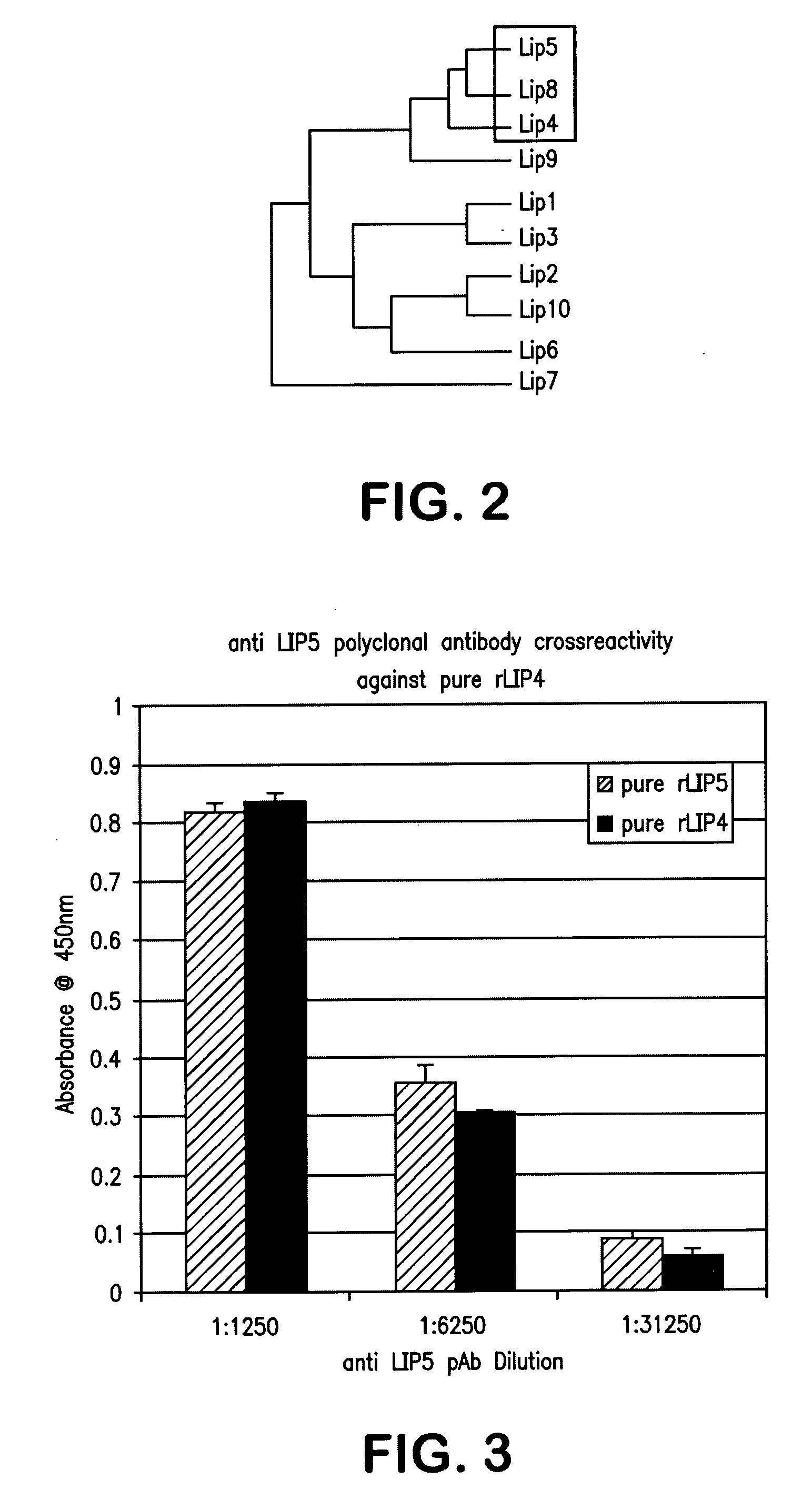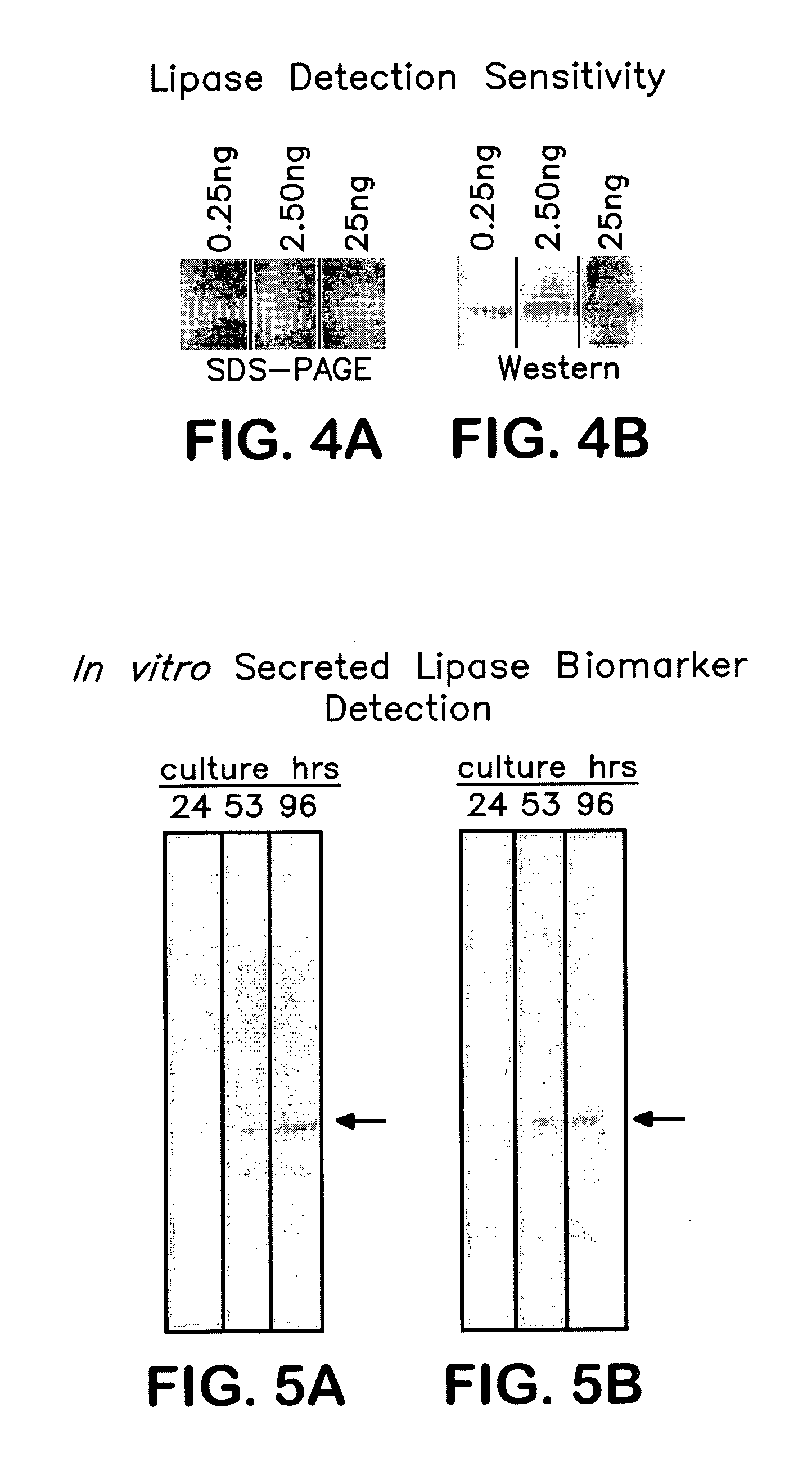Detection of secreted lipase proteins from Candida species
a technology of lipase protein and secreted lipase, which is applied in the field of detection of secreted lipase protein from candida species, can solve the problems of affecting the accuracy of diagnosis, and exacerbated problems
- Summary
- Abstract
- Description
- Claims
- Application Information
AI Technical Summary
Problems solved by technology
Method used
Image
Examples
example 1
[0088] Genomic DNA from Candida albicans culture (ATCC strain 10231 D) was isolated and the target LIP5 gene was amplified via PCR. Recombinant LIP5 (residues 57-403) was successfully subcloned into an E. coli expression vector pET28 (available from Novagen) and purified in 6M urea using an FPLC via a c-terminal 6× histidine tag. The protein was refolded via dialysis in 1×PBS; final yields of 10-20 mg of protein (38.4 kDa) were obtained from 1 liter of bacterial culture.
[0089] IgGs were generated. Following generation they were purified using a protein A agarose column. This increased the effective concentration of the polyclonal antibodies.
[0090] The purified antibodies were probed against recombinant LIP5 protein and also against LIP4 protein and results were measured by ELISA. Results are illustrated in FIG. 3. As may be seen with reference to the figure, the observed signals were found to be identical within the error of the assay. This indicates that the anti-LIP5 polyclonal ...
example 2
[0092] Cultures of C. albicans (ATCC strain #10231) were grown in rich media (YPD) at 37° C. for long incubation times as indicated on FIG. 5A. the anti-LIP5 antibodies described in Example 1 were used to detect a signal with the expected molecular weight of native secreted lipase (indicated on the figure by the arrow). The signal corresponds to an apparent molecular weight of ˜55 kDa; this is in good agreement the predicted molecular weight of ˜50 kDa plus potential glycosylation at the known internal glycosylation site.
[0093]FIG. 5B illustrates the results when the cultures were grown in minimal media (YNB), supplemented with 2.5% Tween20 as a sole carbon source, at 37° C. for the indicated times. Again, a signal develops of the appropriate molecular weight that is specifically recognized by anti-LIP5 antibodies.
[0094] These observations demonstrate that anti-LIP antibodies may be used to detect secreted lipases from model disease systems and that the antibodies may be used to d...
PUM
 Login to View More
Login to View More Abstract
Description
Claims
Application Information
 Login to View More
Login to View More - R&D
- Intellectual Property
- Life Sciences
- Materials
- Tech Scout
- Unparalleled Data Quality
- Higher Quality Content
- 60% Fewer Hallucinations
Browse by: Latest US Patents, China's latest patents, Technical Efficacy Thesaurus, Application Domain, Technology Topic, Popular Technical Reports.
© 2025 PatSnap. All rights reserved.Legal|Privacy policy|Modern Slavery Act Transparency Statement|Sitemap|About US| Contact US: help@patsnap.com



